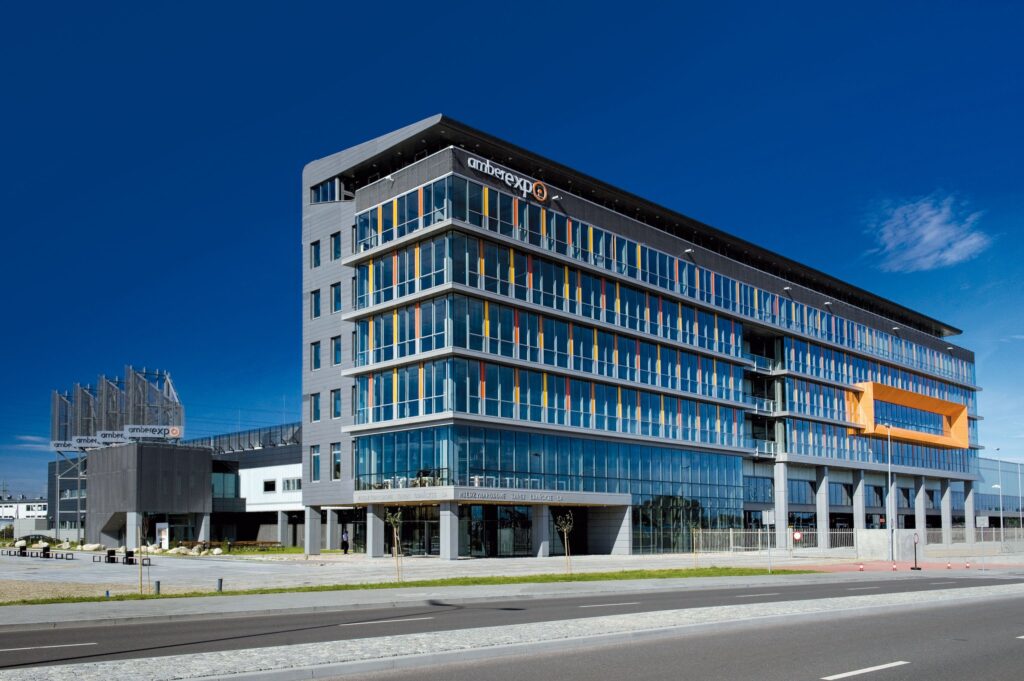Gdańsk, Poland

Address: Gdańsk International Fair – AMBEREXPO
Żaglowa 11, 80-560 Gdańsk, Poland
The International Maritime and Military Fair BALTEXPO 2025 will take place in just 4 months in Gdańsk!
From October 7–9, 2025, the AMBEREXPO center in Gdańsk will, for the 23rd time, become the heart of international maritime and defense dialogue. BALTEXPO 2025 is one of the most important industry events in the Baltic Sea region, bringing together leaders from the maritime, defense, technology, and port sectors from around the world.
Following the success of the first edition organized by the International Gdańsk Fair, which attracted over 200 exhibitors from 15 countries and nearly 5,000 participants, this year’s fair promises to be even more impressive. The organizers are committed to further developing the event format, aiming to attract more representatives from industry, science, and government.
“BALTEXPO is a space for building relationships, exchanging experiences, and shaping the future of the maritime and military sectors. In 2025, we’re raising the bar even higher,” says Joanna Jankowska-Fąs, BALTEXPO project manager. “We are focusing on partnership and innovation—all to strengthen the position of the Polish maritime sector in Europe.”
This year’s edition places a strong emphasis on military topics. The event is held under the honorary patronage of the Deputy Prime Minister and Minister of National Defense, and the defense sector will be prominently represented, showcasing its most modern equipment. Conference sessions will cover the Navy’s modernization directions and strategies, identifying key needs and challenges associated with implementing strategic projects. Major modernization programs being carried out by the Polish Navy will also be presented.
The ongoing war in Ukraine has highlighted the importance of dual-use technologies, which can serve both civilian and military purposes. Equally important are technologies for combating cyber threats, essential in both civilian and military contexts. These issues will form part of the broader discussion on the future of the defense sector.
BALTEXPO 2025 will also feature modern elements such as a Startup Zone, where young companies will showcase innovations in maritime and security technologies. The Career Day, planned for the final day of the fair, will provide an opportunity to meet employers and participate in workshops and mentoring sessions. A strong focus will also be placed on sustainable development and the green transformation of the maritime sector.
A major highlight of BALTEXPO 2025 will be the “Golden Anchors” competition, aimed at recognizing the best companies and institutions in the maritime industry. This prestigious award honors projects, products, and initiatives that have had—or could have—a significant impact on the development of the maritime economy. The competition includes categories such as shipbuilding, offshore, infrastructure, military, and innovation. A special category, “Personality of the Maritime Economy,” will honor an individual who has made an outstanding contribution to the sector’s development in recent years.
Running concurrently with the fair will be the Baltic Ports Organization (BPO) Conference, bringing together representatives of the most important ports and terminals in the Baltic Sea region. This event will serve as a forum for knowledge exchange and the strategic planning of investments in maritime infrastructure.
Over three days of debates, conferences, and meetings, Gdańsk will become a place where the future of the sea is shaped—attracting shipowners, maritime equipment manufacturers, cybersecurity experts, investors, industry journalists, and academic representatives. This is a unique platform that combines experience with innovation, enabling a strategic perspective on the future of the maritime and defense sectors amid rapidly changing regional and global challenges.
More information: 23rd International Maritime and Military Fair | BALTEXPO 2025 fair
